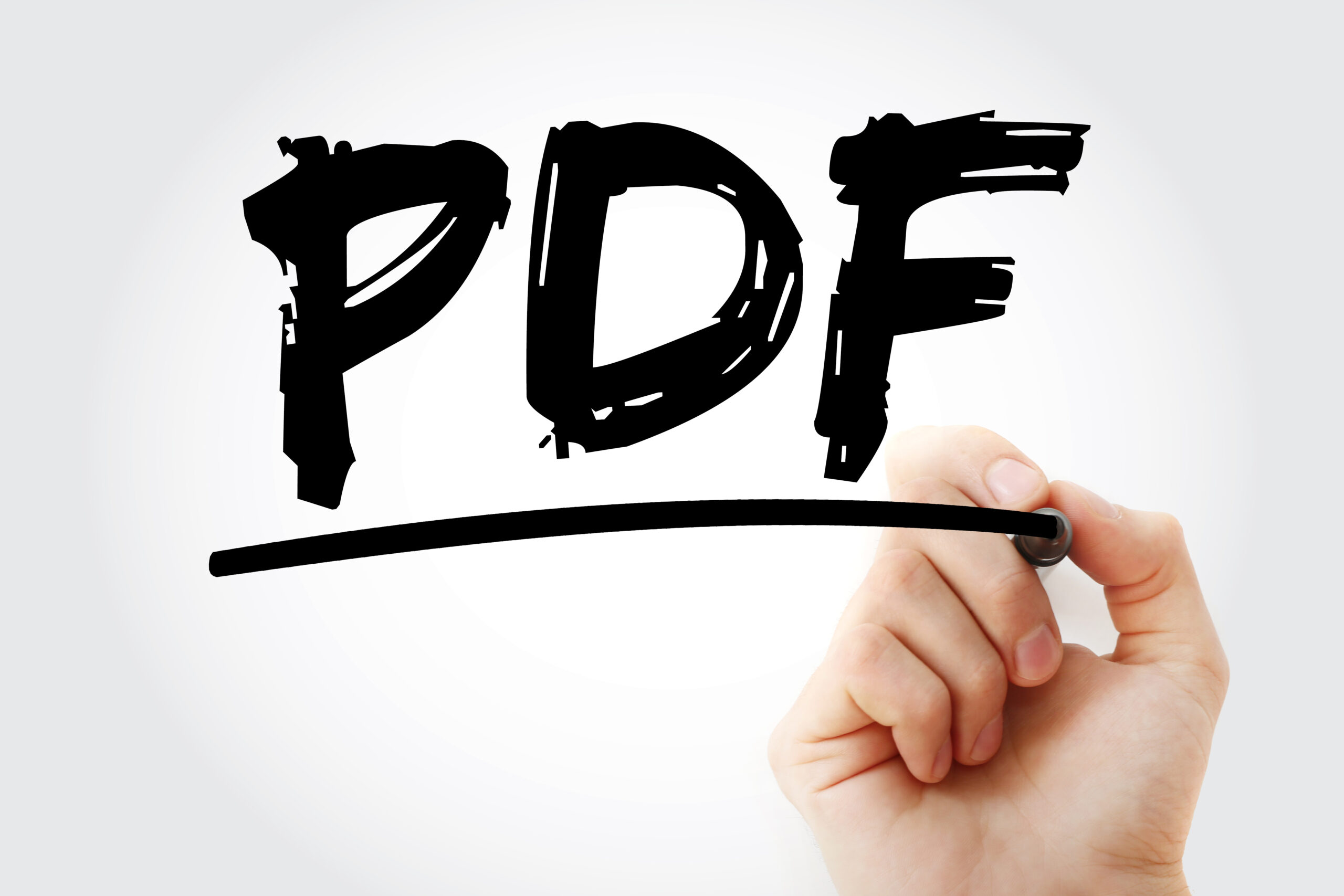*This article is an English translation of a Japanese article.
Introduction
PDFs are widely used on websites as a convenient document format, but they’re not always accessible from an accessibility perspective. For users relying on screen readers or text-to-speech software, PDFs that are not text-based can be difficult to navigate and understand. To create a more accessible web experience, it’s essential to convert PDFs into text format, making the content readable for all users. This article provides practical methods for converting PDFs into text and explains the accessibility benefits of doing so.
Importance of Converting PDFs to Text
While PDFs are great for preserving visual design and layout, they can be challenging to read for users with visual impairments or learning disabilities. If the text and images in a PDF are displayed as visual elements alone, screen readers may not interpret the information correctly. Converting PDFs to text offers several benefits:
- Screen Reader Compatibility: Text-based PDFs allow screen readers to read the content aloud, making it more accessible for visually impaired users.
- Improved Search Functionality: With text-based content, users can easily search for specific words or phrases within the document.
- Mobile-Friendly Viewing: Text-based PDFs are easier to view on various screen sizes, making them more accessible on mobile devices.
Methods for Converting PDFs to Text
1. Copy and Paste PDF Content
The simplest way is to manually copy the text from a PDF and paste it into a text editor or word processor. While this is quick, formatting and layout may be lost, so some adjustments may be necessary.
Steps:
- Open the PDF.
- Select and copy the text.
- Paste the text into a text editor (e.g., Notepad, Word).
- Adjust the layout and formatting as needed.
2. Use Optical Character Recognition (OCR) Tools
If the PDF text is stored as an image, it won’t be recognized as text. OCR tools can convert images of text within PDFs into actual text, which can then be read by screen readers. Many PDF editing programs and dedicated OCR software offer this functionality.
Recommended OCR Tools:
- Adobe Acrobat: Converts scanned PDFs to text, making it compatible with screen readers.
- Google Docs: Upload the PDF to Google Drive, convert it to Google Docs format, and text extraction happens automatically.
- ABBYY FineReader: A high-accuracy OCR tool with strong multi-language support.
Steps:
- Open the PDF in an OCR tool.
- Perform text recognition.
- Review the output and make any necessary corrections to text and layout.
3. Convert PDFs to Text with PDF Editing Software
Many PDF editors offer built-in tools for converting PDFs directly to text or Word formats, preserving content formatting while enabling accessibility.
Recommended Software:
- Adobe Acrobat: Allows conversion to Word or text format with excellent formatting retention, ideal for creating accessible files.
- Nitro PDF: A robust PDF editing tool that enables easy conversion to text format.
Steps:
- Open the PDF in PDF editing software.
- Choose “Save As” from the “File” menu and select “Text” or “Word.”
- Check and adjust the text layout as needed.
4. Use Online PDF Conversion Tools
For those who prefer not to install software, online PDF conversion tools offer a quick, free way to convert PDFs to text format. However, avoid using online tools for sensitive documents due to potential security risks.
Recommended Online Tools:
- Smallpdf: A simple tool for converting PDFs to Word or text formats.
- PDF2Go: A versatile online tool for PDF text conversion and editing.
Steps:
- Visit the online tool and upload the PDF.
- Choose the option to convert to text format.
- Download the file and adjust the text as needed.
Tips for Creating Accessible PDFs
Beyond converting PDFs to text, there are several additional steps to ensure your PDFs are fully accessible:
1. Create Tagged PDFs
Tagged PDFs allow screen readers to interpret document structure correctly. Tags mark elements like headings, lists, and paragraphs, making the document’s flow easier to understand. Both Adobe Acrobat and Microsoft Word make it easy to create tagged PDFs.
2. Add Alternative Text (Alt Text) for Images
Add alternative text to images and diagrams so that screen readers can describe these elements to users. This step ensures that visually impaired users can understand the visual content.
3. Use Readable Fonts and Layouts
Use simple, readable fonts and set adequate line and letter spacing for a comfortable reading experience. Avoid overly decorative fonts and ensure the text size is sufficient.
4. Consider Color Contrast
Maintain sufficient contrast between background and text colors. Low-contrast text can be difficult for visually impaired or older users to read. The Web Content Accessibility Guidelines (WCAG) recommend a minimum contrast ratio of 4.5:1.
Conclusion
Converting PDFs to text is an essential step in improving web accessibility. For users who rely on screen readers or search functionality, text-based PDFs make accessing information much easier. By using OCR tools and PDF editing software, you can efficiently convert PDFs to text format. Additionally, creating accessible PDFs with features like tagging and alt text ensures an inclusive experience for all users.
By implementing these practices, you can help build a website that’s user-friendly and accessible, fostering an inclusive information environment where everyone has equal access.
We have released the UUU Web Accessibility Widget Tool, designed to make web accessibility easy to implement. This tool helps improve the accessibility of websites quickly and efficiently, even without specialized knowledge.
If you’re interested in enhancing your website’s accessibility, please check out the details. We are here to support you in making your website more user-friendly and accessible to a wider audience.
